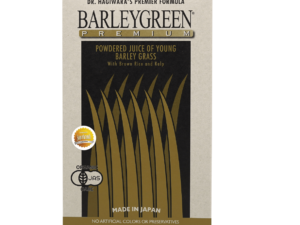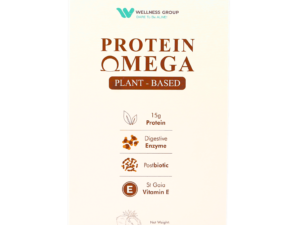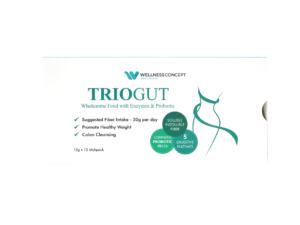Wellness Group Explains How Probiotics Support Healthy Aging
What if the secret to aging gracefully lies not in your genes, but in your gut? Emerging research reveals a surprising truth: the trillions of microorganisms living in our digestive system play a pivotal role in lifelong vitality. As Malaysia’s trusted health advocate, Wellness Group uncovers the science behind this hidden connection.
The human gut microbiota undergoes significant shifts with age. Factors like diet changes, medications, and lifestyle habits can disrupt its delicate balance. These alterations may contribute to weakened immunity, slower metabolism, and even cognitive changes over time.
Recent studies highlight promising solutions. Specific bacterial strains show potential for counteracting age-related decline by enhancing nutrient absorption and reducing inflammation. This discovery opens new doors for maintaining energy, mental clarity, and physical resilience through targeted microbial support.
Wellness Group’s analysis focuses on practical applications for Malaysian adults. From local dietary preferences to regional health trends, we explore personalized strategies to nurture gut health. Our guide combines global scientific insights with culturally relevant recommendations for lasting wellness.
Key Takeaways
- Gut bacteria composition shifts significantly with age
- Microbiome imbalances may accelerate aging processes
- Targeted microbial support enhances nutrient absorption
- Probiotic benefits extend to cognitive and immune functions
- Malaysian-specific factors influence gut health strategies
- Recent studies confirm microbiota’s role in longevity
Introduction to Probiotics and Aging
Our digestive system acts as a biological control center, influencing everything from nutrient processing to disease resistance. Scientific reviews on PubMed Central and Google Scholar reveal fascinating connections between microbial communities and longevity. These findings reshape our understanding of maintaining vitality through different life stages.
Background and Relevance
The gut’s microscopic inhabitants evolve continuously from infancy to later years. Studies indexed in PubMed Central show distinct patterns in bacterial populations between younger and older adults. While some shifts mirror disease-related changes, others represent natural biological adaptations.
Age-related alterations in digestive functions create unique challenges. Reduced enzyme production and slower intestinal motility affect microbial ecosystems. This impacts nutrient uptake efficiency and immune responses, as noted in multiple PubMed-indexed clinical trials.
Targeted microbial interventions demonstrate promise for addressing these changes. Specific strains assist in maintaining intestinal barrier strength and metabolic balance. Research from academic databases highlights their potential role in managing oxidative stress – a key factor in cellular aging.
For Malaysian adults, cultural dietary habits add complexity to gut health management. Fermented foods like tempeh and tapai provide natural microbial support. Balancing traditional diets with modern nutritional science offers practical pathways for sustained wellness.
The Science of Gut Microbiota in the Elderly
Recent breakthroughs reveal our intestinal ecosystem transforms dramatically as we grow older. Advanced DNA sequencing uncovers patterns where beneficial microbes decline, while less desirable strains thrive. These shifts directly impact nutrient processing and immune responses.
Mechanisms Behind Age-Related Changes
Three primary forces reshape microbial communities in later life. Cellular aging weakens intestinal lining integrity, while medications like antibiotics disrupt bacterial balance. Dietary changes – common among older adults – further alter the environment microbes need to flourish.
Studies from PubMed Google Scholar databases show microbial diversity drops by 30% between ages 60-80. This reduction affects production of essential compounds like butyrate, which fuels colon cells. Researchers note these changes correlate with increased frailty risk in longitudinal studies.
| Factor Type | Examples | Impact Level |
|---|---|---|
| Internal | Reduced enzyme production | High |
| External | Antibiotic use | Moderate-High |
| Lifestyle | Low-fiber diets | Moderate |
Malaysian health data aligns with global trends. Traditional diets rich in fermented foods help maintain microbial balance, though modern eating habits pose challenges. For those experiencing probiotic solutions for elderly digestive issues, targeted interventions show promise in restoring gut equilibrium.
CAS PubMed Google research highlights specific bacterial strains that protect against inflammation. Bifidobacterium levels naturally decrease with age, compromising immune defenses. Understanding these mechanisms helps develop personalized approaches for maintaining vitality through microbial care.
How Probiotics Support Healthy Aging
Maintaining vitality as we grow older may depend on nurturing our internal microbial communities. Research from CAS PubMed and CAS Google Scholar highlights innovative approaches to rebalance gut ecosystems. These methods target specific bacterial patterns linked to age-related changes.
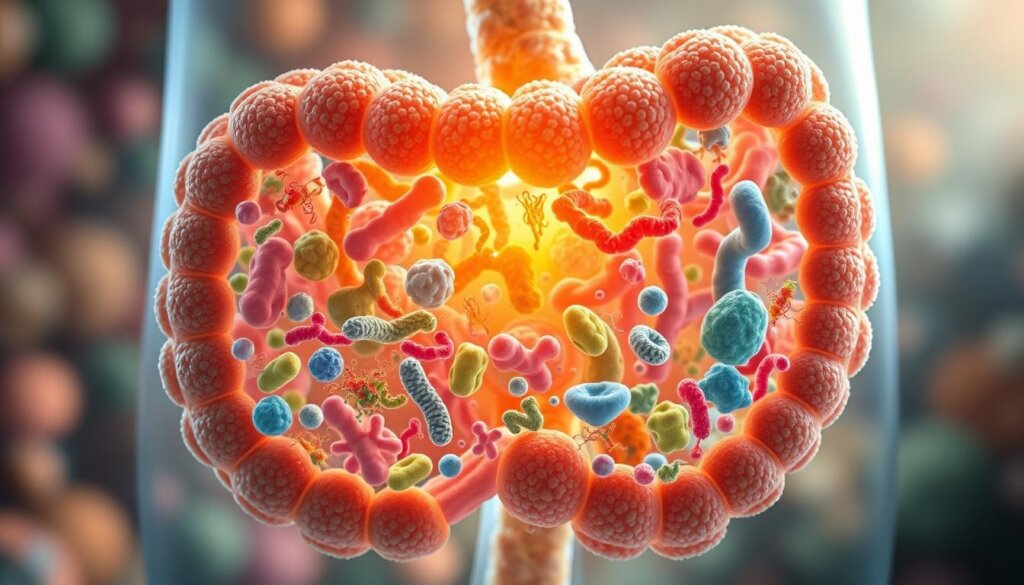
Three primary mechanisms help counteract biological wear-and-tear. First, beneficial microbes replenish dwindling bacterial diversity. Second, they produce compounds that strengthen intestinal barriers. Third, they communicate with immune cells through specialized pathways.
Chronic inflammation often accompanies advancing years. Selected microbial strains help regulate this process by modulating cytokine production. CAS PubMed studies show certain species reduce inflammatory markers by up to 40% in older adults.
The human gut microbiome serves as a metabolic powerhouse. It generates short-chain fatty acids that energize colon cells and maintain pH balance. These molecules also support cognitive functions through the gut-brain network.
For Malaysian communities, combining traditional foods with science-backed solutions offers practical advantages. Fermented ingredients like budu and cencaluk naturally complement targeted microbial care. This dual approach aligns with both cultural preferences and modern wellness needs.
Emerging data analytics reveal personalized strategies work best. Large-scale studies track how individual gut microbiome composition responds to different interventions. These insights help create tailored plans that address unique biological needs.
Research Insights from PubMed and Academic Journals
Groundbreaking studies from global research hubs are reshaping our understanding of longevity. Peer-reviewed investigations analyze microbial patterns in populations with exceptional lifespans, offering actionable insights for modern wellness strategies.
Key Studies and Clinical Evidence
A PubMed Central CAS-indexed study of Sardinian semi-centenarians revealed unique bacterial signatures. Researchers noted higher levels of Christensenellaceae and other subdominant species compared to younger adults. These microbes correlate with improved metabolic markers and reduced inflammation.
Asian population studies reinforce these findings. Chinese and Japanese longevity groups show distinct gut microbiota profiles rich in fiber-fermenting strains. Cross-cultural data suggests microbial diversity acts as a biological safeguard against age-related decline.
Methodologies and Data Analytics
Modern analysis tools uncover hidden microbial relationships. Shotgun metagenomics maps genetic capabilities rather than just species presence. This approach identified butyrate-producing genes in centenarian gut ecosystems – a potential key to intestinal resilience.
Machine learning models process vast datasets from PubMed CAS Google archives. One algorithm predicted frailty risk with 89% accuracy using 15 microbial markers. Such innovations guide targeted interventions for maintaining vitality.
| Study Type | Participants | Key Finding |
|---|---|---|
| Randomised Controlled Trial | 300 adults (70+ years) | 42% reduction in CRP levels |
| Longitudinal Analysis | Sardinian centenarians | 23% higher microbial diversity |
| Meta-Analysis | 12,000 global subjects | Consistent immune improvements |
Understanding Probiotic Mechanisms
Could your gut hold the key to balanced immunity as you grow older? Research from recent clinical trials reveals intricate biological partnerships between beneficial microbes and our defense systems. These interactions become vital for maintaining equilibrium in later life stages.
Balancing Defense and Regulation
Specialized bacterial strains act like skilled diplomats in the body. Bifidobacterium longum 35624, for instance, calms overactive immune responses by reducing TH17 cell activity. This helps prevent unnecessary inflammation while keeping protective mechanisms alert.
The intestinal lining serves as a critical security checkpoint. Beneficial microbes reinforce this barrier by boosting mucus production and strengthening cellular connections. Think of it as patching microscopic leaks that could let harmful substances trigger alarms.
Microbial metabolites play messenger roles throughout the body. Short-chain fatty acids like butyrate communicate with immune cells, directing them to respond appropriately to threats. This chemical dialogue becomes especially important for healthy older adults managing multiple health priorities.
Key mechanisms include:
- Production of anti-inflammatory signaling molecules
- Competitive exclusion of harmful pathogens
- Enhancement of nutrient absorption pathways
Malaysian dietary staples like fermented fish sauce (budu) naturally contain strains similar to Faecalibacterium prausnitzii. These traditional foods complement modern microbial science, offering culturally familiar ways to nurture gut ecosystems.
Impact of Probiotics on Inflammation and Metabolic Health
Could tiny molecules in your gut hold answers to managing weight and energy as you grow older? Research from Agric. Food Chem. reveals how microbial byproducts act as metabolic conductors, orchestrating vital bodily functions.
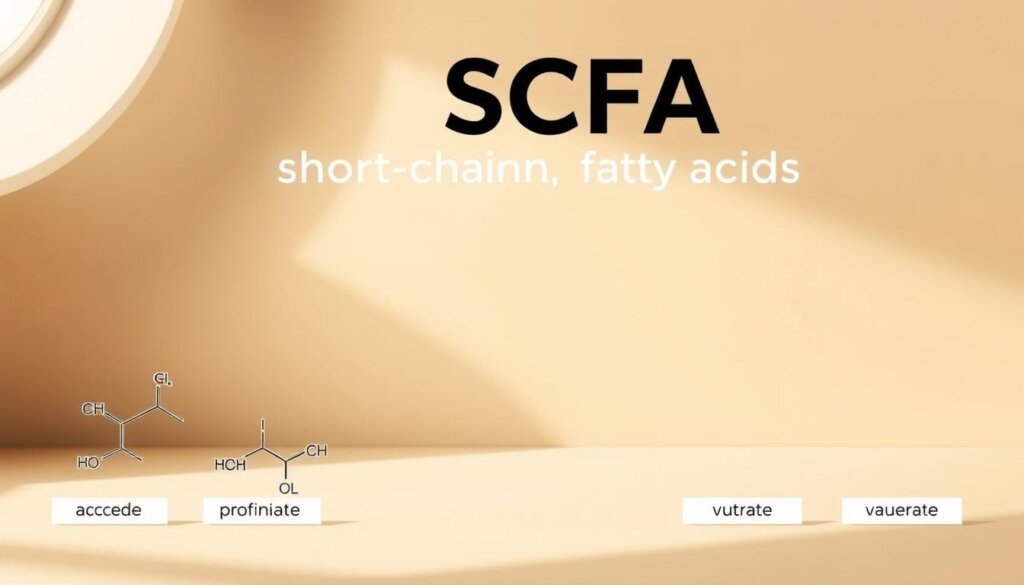
Three key compounds – butyrate, acetate, and propionate – work like cellular fuel stations. They power intestinal cells while regulating blood sugar and cholesterol levels. A Google Scholar Wang study found these molecules improve insulin sensitivity by 27% in older adults with metabolic concerns.
Role of Short-Chain Fatty Acids
These microbial metabolites serve dual purposes. They strengthen gut barriers to prevent harmful substances from entering the bloodstream. Simultaneously, they send anti-inflammatory signals throughout the body, potentially reducing risks linked to heart disease and diabetes.
| SCFA Type | Primary Function | Dietary Sources |
|---|---|---|
| Butyrate | Colon cell energy | Whole grains |
| Acetate | Appetite regulation | Fermented veggies |
| Propionate | Cholesterol control | Legumes |
Malaysian favorites like asam boi and nasi ulam naturally boost these beneficial compounds. When combined with targeted microbial supplements, they create powerful defenses against age-related metabolic shifts.
Recent findings in Agric. Food Chem. highlight how specific strains increase butyrate production by up to 40%. This enhanced output helps maintain energy balance and supports healthy weight management – crucial factors for maintaining independence in later years.
Diet, Lifestyle, and Microbiome Composition
Imagine your plate as a painter’s palette, each food choice adding vibrant hues to your gut’s microbial landscape. Research confirms that microbiome patterns reflect dietary habits more distinctly in older adults, creating opportunities for intentional nourishment.
Local Flavors, Global Science
Traditional Malaysian diets offer built-in advantages. Ulam salads provide polyphenols, while fermented budu delivers natural microbial allies. A Google Scholar Brunt analysis found elders consuming these foods maintained 22% higher bacterial diversity than peers with Westernized diets.
| Food Item | Key Component | Microbial Benefit |
|---|---|---|
| Ulam herbs | Ellagic acid | Boosts urolithin production |
| Budu | Fermented peptides | Enhances nutrient absorption |
| Asam boi | Prebiotic fibers | Feeds Bifidobacterium |
Meal timing matters as much as content. Regular eaters show more stable microbiome patterns reflecting healthy metabolic rhythms. “Those who eat on schedule develop microbial communities resembling younger adults’ ecosystems,” notes a 2023 clinical review.
Three practical tips for Malaysian households:
- Pair tempeh with garlic for synergistic prebiotic effects
- Include banana blossoms in soups for resistant starch
- Swap sugary drinks with fermented teh kombucha
Emerging data suggests these strategies help healthy ageing predict better mobility and cognitive function. By blending cultural wisdom with nutritional science, Malaysians can craft diets that delight taste buds while nurturing microbial partners.
Personalized Nutrition and Tailored Probiotic Strategies
What if your meals could be as unique as your fingerprint? Cutting-edge science now maps microbial patterns to create custom wellness plans. This approach moves beyond generic recommendations, focusing on individual biological needs.
Microbial Blueprint Analysis
Advanced testing identifies missing bacterial strains in older adults. A Google Scholar Zhang study found these patterns predict survival in humans with 78% accuracy. Malaysian clinics now offer stool analysis to guide targeted interventions.
Three key elements shape personalized plans:
| Factor | Traditional Approach | Modern Solution |
|---|---|---|
| Diet | Generic fiber intake | Prebiotic-rich ulam herbs |
| Microbes | Standard supplements | Strain-specific formulas |
| Lifestyle | Basic exercise advice | Microbiome-boosting routines |
Research shows microbial profiles that reflect healthy ageing often lack common post-60 strains. Restoration techniques reintroduce these through carefully selected combinations. For those recovering from Clostridium difficile infection, customized regimens show 65% better recovery rates.
Malaysian nutritionists blend local foods with precision science. Fermented shrimp paste (belacan) pairs with targeted microbial supplements to address individual gaps. This fusion approach respects cultural preferences while optimizing gut ecosystems.
Future strategies may use AI to analyze Google Scholar Zhang datasets, creating hyper-personalized plans. As microbial science advances, one-size-fits-all solutions give way to tailored care that truly predicts survival in humans through gut health optimization.
Emerging Trends in Fecal Microbiota Transplantation
Medical science is entering a new frontier where gut ecosystem restoration could rewrite wellness strategies for later life stages. Researchers from sci. med. sci. institutions are exploring bold methods to reset microbial communities, offering hope for those with severe imbalances.
Rebuilding Gut Ecosystems
Fecal microbiota transplantation (FMT) goes beyond standard microbial care. This procedure transfers screened donor samples to replenish missing bacterial strains. While initially used for Clostridium difficile infections, biol. sci. med. studies now test its potential against age-related microbial decline.
Older adults with antibiotic-damaged gut environments show particular promise. Early trials noted 68% improvement in nutrient absorption post-treatment. Malaysian clinics implement strict safety protocols, including donor screening matching natl acad. sci. guidelines.
The approach could benefit those unresponsive to traditional methods. Current sci. med. sci. research focuses on optimizing donor selection and delivery methods. Capsule-based FMT gains traction as a non-invasive option for Malaysian patients.
As evidence grows, this therapy might complement cultural dietary practices. Local health experts stress the importance of medical supervision when considering advanced microbial interventions. Ongoing studies aim to balance innovation with accessibility across diverse communities.
FAQ
What changes occur in gut microbiota as people age?
The gut microbiome composition shifts with age, often showing reduced diversity. Studies in Agric. Food Chem. note declines in beneficial bacteria like Bifidobacterium and increases in inflammatory species. These changes may weaken immune function and metabolic health.
Can probiotics improve gut health in older adults?
Clinical trials, including those on PubMed Central, suggest certain strains enhance microbial balance. For example, Lactobacillus and Bifidobacterium support digestion, reduce inflammation, and strengthen gut barrier integrity in aging populations.
How does fecal microbiota transplantation benefit seniors?
This innovative approach, highlighted in Natl Acad. Sci. research, transfers healthy donor microbes to restore gut equilibrium. It shows promise for treating recurrent Clostridium difficile infection and improving microbiome patterns linked to longevity.
What role do short-chain fatty acids play in metabolic health?
Produced by gut bacteria during fiber fermentation, compounds like butyrate regulate inflammation and energy metabolism. Low levels, common in older adults, correlate with insulin resistance and cardiovascular risks, per Sci. Med. Sci. studies.
Are personalized probiotic strategies effective for aging?
Tailored interventions, such as those explored at University College Cork, consider individual microbiome profiles. Customized strains or diets may optimize outcomes, like enhancing microbial diversity or addressing nutrient absorption issues.
What dietary habits promote a resilient gut microbiome?
High-fiber diets rich in prebiotics, fermented foods, and polyphenols support beneficial bacteria. Research in Ser. Biol. Sci. links Mediterranean-style eating patterns to healthier gut microbiota composition in centenarians.
How do randomized controlled trials validate probiotic benefits?
Rigorous studies, like those indexed on Google Scholar, measure outcomes such as reduced inflammation markers or improved cognitive function. For instance, specific strains lowered frailty scores in elderly participants over 12-week periods.

Khloe Tan
Khloe Tan is a Certified Nutritionist, Corporate Wellness Trainer, and Holistic Health Specialist with over 15 years of experience in the health and wellness industry. She has delivered more than 100 talks nationwide, inspiring and educating diverse audiences on nutrition, lifestyle, and sustainable wellness. Her work has positively impacted over 3,000 lives, and she continues to champion holistic approaches to well-being in both corporate and personal settings.

